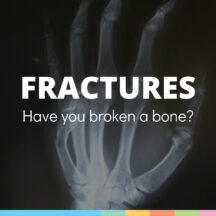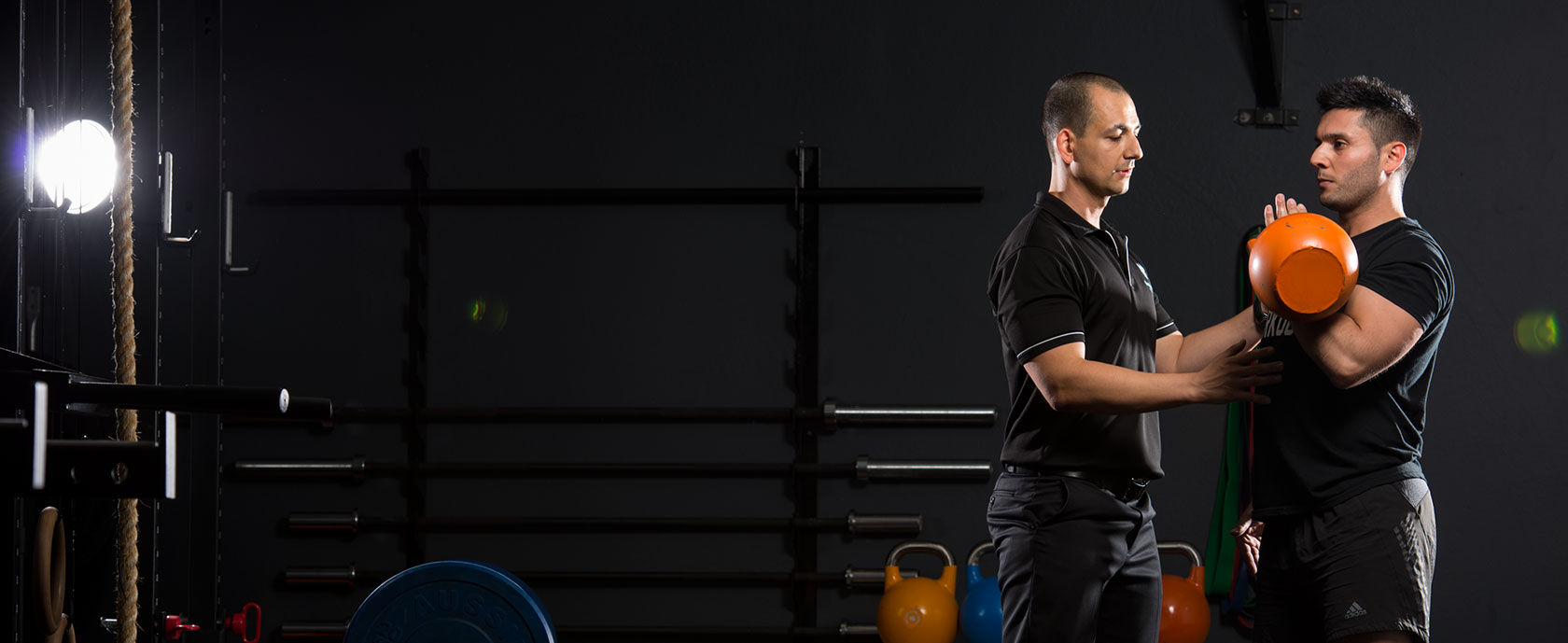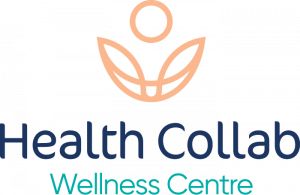
5 key things to consider when managing your knee injury
Are you suffering from knee pain?
Is an ACL injury stopping you doing what you love?
Whether its a cranky arthritic knee slowing you down in the morning, an irritated ligament thats keeping you from training and getting fit this summer, or an unstable knee cap that catches going upstairs, knee pain can be debilitating. If you want to find out what you need to do after an ACL injury, continue reading.
The problem with a grumpy knee is that you start putting pressure on other parts of your body… You stop loading the knee when you pick things up and then eventually your back starts giving way, or your hip starts pinching.
In our clinic, we see dozens of cranky knees every week ranging from ACL ruptures, torn cartilage, bone bruising or unstable knee caps. In recent weeks we have seen a spate of ACL injuries.
- A 42 year old Assistant principal who ruptured her ACL playing netball after landing awkwardly… We are currently helping her post op rehab, 6 months in to her rehab and she is doing really well.
- A 60 year old squash player with a complete rupture whom we are helping avoid surgery
- A young mother who partially tore her ACL when doing star jumps during bootcamp
- A 40 year old entrepreneur who re-ruptured his ACL swatting a mosquito (his initial story was he was wrestling a bear Lol)
- A 26 year old kick-boxer and Oz-tag rep player undergoing his rehab after an ACL reconstruction.
As you can see it does not matter whether you are younger, older, male or female, super fit or participate in social sport once a week, anyone can sustain a serious ACL injury.
Here are 5 key things that you must do in order to make sure that you have the best chance of recovering from what can be a serious and debilitating injury if left unaddressed.
1. Get an early diagnosis so we minimise the risk of further damage – This is crucial in the early days so that we understand the extent of the injury and preserve what is not injured.
Your ACL plays a big role in stabilising your knee. If you injure it and continue to play vigorous sport or activity you put the other ligaments and cartilage in the knee at risk of injury, and you potentially have a more complicated injury that will mean a slower longer recovery time.
An example is our third patient above who partially tore her ACL… She felt it go and knew it was not right when it happened. A week later back at training she was trying to run up a hill… her knee hurt and she figured it was time to get it looked at now that John and his team are back from holidays…
Something did not appear right on assessment so we recommended an MRI to see what was going on.
With a bit of treatment things started feeling better… We insisted on getting the MRI as we still had concerns.
Lucky we did as it showed a partial tear of the ACL. A partial tear can start feeling good within a number of weeks, however the ligament will take months to heal and remodel Properly.
So if her activity is not monitored carefully by our team, then she could end up with a complete tear of her ACL rather than a partial, and that could end up needing surgery and a 12 month recovery.
2. Follow the plan – Let things settle down.
The most crucial thing is to give your injured knee time to heal. In the early days knee pain will tell you how much rest you need. As the pain begins to settle, your confidence will build and you will think that it’s ok to get back into your normal routine.
Work, life, activities, social occasions will all be putting pressure on you do more than your knee is capable of in the early days of the ACL injury. The problem we see in the clinic, is when the knee is pushed too much too soon, or on the other hand, the rehab is not done enough and you are stuck sitting at a desk all day, it will get stiff and swollen. This will affect your recovery, slowing your progress.
It may be necessary to take some time off, and rest the knee. Having time off will also allow you to do your knee rehab exercises regularly and consistently. This will will have the biggest positive impact on your knee pain.
3. Do your knee rehab exercises – get it moving, then get it strong.
The goal after any injury is to get you back doing what you love. Whether its training, running after your kids, playing sport at a competitive level.
There are a few phases we need to work hard to achieve.. They are very similar whether you are considering having an ACL reconstruction, or managing it without the op.
- Phase 1 – reduce swelling, regain mobility.
Super important phase. If we do not achieve full range of motion quickly, scarring can form, making it difficult to move the knee. This will be a big problem down the track, causing complications as we start building towards more strength work
- Phase 2 – Achieve quad and hip control, improving movement quality.
Prior to building strength we need to build control. Surprisingly, a lot of people neglect hip control exercises when addressing knee pain. A lot of recent research demonstrates that poor hip control can actually increase your risk of an ACL injury, and if we don’t get it right, your risk of re-injury increases.
Our rehab protocols in our peak performance lab focus on building hip control, improving your likelihood of a great outcome.
From here we also want to start challenging your quad and hamstring strength, as that will primarily be responsible for stabilising your knee joint, and build a solid foundation for the next phase of rehab
- Phase 3 – Build up quad and hip strength, adding more complex movements.
This is when the rehab gets fun. Usually 3 months in things should have settled down well by now. You will find the rehab starts getting more challenging and you are building up more strength, feeling more confident and sure about your knee. We usually introduce some light running drills at this point, working towards your return to sport activity.
If all has gone well and you have followed the plan with no setbacks, you will notice day to day that your knee almost feels like you have not had an operation. This is the danger zone.
You feel good, but you lack the strength and endurance can pose a risk. If you have had a knee reconstruction, your ACL graft is most vulnerable and weakest around 3-4 months. So gradually building your activity levels and gym work is super important at this stage. Consistency is key.
- Phase 4 – sports specific drills
This is usually at the 6 month mark. Your knee should be nice and strong by now. If you want to get back to sport then we usually start integrating movement that mimic your play. Eg Basketball or netball, jumping, landing, agility… Soccer, kicking, pivoting, acceleration and direction change… Football, some contact drills etc.
This is another critical point where we need to gradually introduce and build you work load as your strength and endurance is building. Too much too soon, could result in reinjury as well with these higher demand movements.
As you gain confidence, and we feel sure about your ability to execute, we can slowly re-introduce you to your training environment. This is usually the moment where you look forward to the most, and you finally feel like you are getting back to normal.
- Phase 5 – Sports specific injury prevention protocols
This is often another strategy that is overlooked.
IF YOU INTEND ON RETURNING TO SPORT AND YOUR PHYSIO DOES NOT PROVIDE YOU WITH AN INJURY PREVENTION PROTOCOL, THEN YOU NEED TO SACK THEM AND FIND ONE THAT DOES.
The Fifa11+ program is an example of an injury prevention program specifically for Soccer players. Research has shown a decrease by more than 40% in knee injuries in the group who followed the protocol, over those that did an unstructured warm up.
We take all ACL reconstruction or knee injury patients through a sports specific injury prevention protocol. The evidence is just too strong to not do this.
4. Delay return to sport for at least 9 months, no matter how great your knee rehab is going.
One research article identified that for every month you delay your return to sport up to 9 months, you reduce your risk of re-injury by 50%. So if you return to sport 6 months following surgery, your risk of re-rupture increases by 150% compared to if you delay until 9 months. A crazy statistic. Makes so much sense to give the knee time to heal up, and your strength and control to improve.
5. Maintain a strength and conditioning program.
Usually the injury prevention program can be structured into your warm ups, so you are ready to take on the activity such as soccer, football, or netball.
What if you don’t go back to sport – can you still carry ut the injury prevention program? ABSOLUTELY. One of the best things for your knee pain is to keep fit, strong and healthy. You can incorporate your knee rehab program as a way to keep on top of your injury… No need to wait for your next knee injury to do it… Prevention is key.
Final comments
Regardless of your knee injury, there is a process that will help you getting back to doing what you love. ACL injuries are potentially debilitating. But with the right guidance, treatment and rehabilitation program, you can get back to doing whatever is you love doing most.
If you are suffering from knee pain, or have suffered a knee injury and would like some help, reach out and email me at john@yourhealthsolutions.com.au and we can send through a free rehab program that will help get you moving again.
Take care.
John Panuccio
Director and Senior Practitioner






